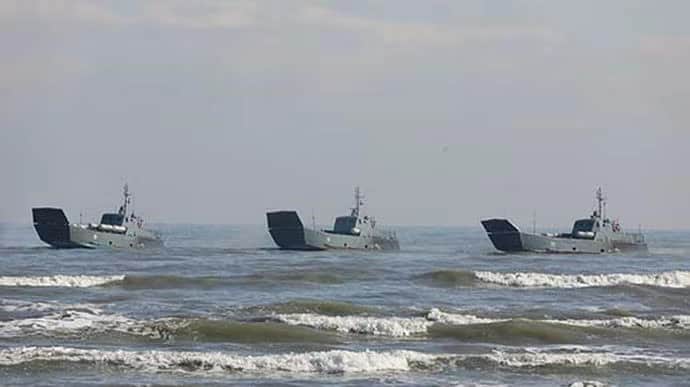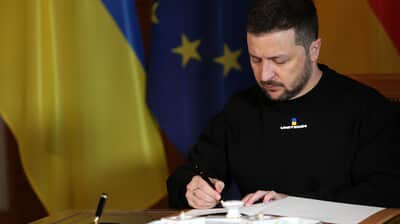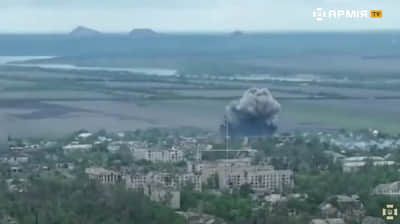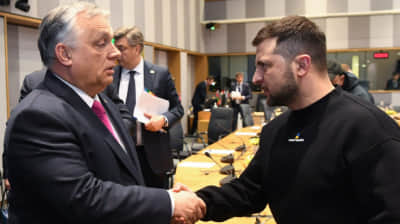Russia will not be able to implement blockade of Black Sea – ISW

Experts at the Institute for the Study of War (ISW) have suggested that Russia is unlikely to succeed in implementing a blockade of the Black Sea.
Source: the ISW
Details: The ISW indicated that the Russian Black Sea Fleet was increasing its military presence in the Black Sea, likely in an attempt to create conditions for the forced stop and search of civilian vessels and to increase control in the region.
The Military Media Centre and the UK Ministry of Defence reported that Russian forces are preparing ships in the Black Sea to "enforce the blockade on Ukraine".
At the same time, the ISW said that despite the increased measures against civilian vessels, the Black Sea Fleet is unlikely to be able to carry out a complete blockade of Ukraine.
After all, a complete Russian blockade of Ukraine in the Black Sea would mean that Russian forces could open fire on all ships trying to reach Ukraine.
In experts’ opinion, Russia is unlikely to try to impose such a complete blockade without provoking a military conflict with the Black Sea coastal countries, including NATO members Romania, Bulgaria and Türkiye.
Experts noted that Russia's current position in the Black Sea most likely indicated that Russia was creating conditions for the search of civilian and commercial vessels, while positioning the blockade as a means of gaining additional leverage.
Analysts also suggested that Ukrainian forces launched a significant mechanised counter-offensive in western Zaporizhzhia Oblast on 26 July and appeared to have broken through some reinforced Russian defensive positions south of Orikhiv.
The Ukrainians have apparently moved fresh forces to the area of Robotyne to conduct the operation, while Russian forces remain pinned down, apparently without rotation, assistance or significant reinforcements in the sector, which could allow Ukraine to start a more successful advance south of Orikhiv in the coming weeks.
Western and Ukrainian officials suggested that the attacks towards Robotyne would mark a turning point in Ukraine's counter-offensive efforts.
Experts said that the actions around Robotyne were most likely the beginning of the "main strike" of the Ukrainian counter-offensive.
To quote the ISW's Key Takeaways on 26 July:
- Ukrainian forces launched a significant mechanised counteroffensive operation in western Zaporizhia Oblast on 26 July and appear to have broken through certain pre-prepared Russian defensive positions south of Orikhiv.
- Russian sources provided a wide range of diverging claims as to the scale of both the attack and resulting Ukrainian losses, indicating that the actual results and Ukrainian losses remain unclear.
- The battlefield geometry around Robotyne, as well as the force composition of the Russian elements defending there, offer important colour to speculation surrounding the Ukrainian attack and gains.
- Western and Ukrainian officials suggested that the attacks towards Robotyne mark an inflection in Ukraine’s counteroffensive effort. Today’s actions around Robotyne are likely the start of any "main thrust" Ukrainian forces might be launching, if US officials are correct, rather than the sum of such a thrust.
- Russian forces conducted a large-scale missile strike largely aimed at rear areas in Ukraine on the night of 26-27 July.
- The Russian Black Sea Fleet is increasing military posturing in the Black Sea, likely in an attempt to set conditions to forcibly stop and search civilian vessels and exert increased control in the area.
- The US Department of Defence announced on 26 July that it authorised another presidential drawdown to provide an additional $400 million of security assistance to Ukraine.
- Russia continues to find ways to remind Armenia and Azerbaijan that Moscow’s military and diplomatic presence in the South Caucasus is necessary. The Russian government may have intended for the Russia-Armenia-Azerbaijan trilateral meeting to reduce possible Iranian efforts to supplant Russian influence with Armenia by providing Shahed drones to Yerevan.
- Russian forces conducted offensive operations along the Kupiansk-Svatove-Kreminna line, in Bakhmut, along the Avdiivka-Donetsk City line, in western Donetsk Oblast, and in western Zaporizhzhia Oblast on 26 July and have made advances in certain areas.
- Ukrainian forces continued counteroffensive operations along at least three sectors of the front on 26 July and have advanced in certain areas.
- Ukrainian military sources reported that Russian forces have begun using Russian-produced Shahed drones against Ukraine.
- Russian occupation authorities continue to pursue infrastructure projects in occupied areas to facilitate the economic integration of occupied Ukraine into the Russian system.
Journalists fight on their own frontline. Support Ukrainska Pravda or become our patron!







